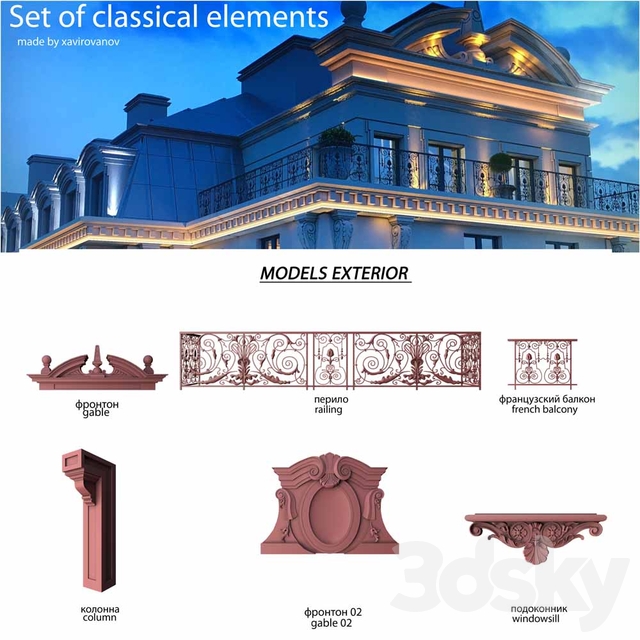
3d Modeli Balyasin
• • • In, 3D modeling is the process of developing a mathematical representation of any of an object (either inanimate or living) in via. The product is called a 3D model. Someone who works with 3D models may be referred to as a 3D artist. It can be displayed as a two-dimensional image through a process called or used in a of physical phenomena. The model can also be physically created using devices.
Models may be created automatically or manually. The manual modeling process of preparing geometric data for 3D computer graphics is similar to such as. Is a class of software used to produce 3D models. Individual programs of this class are called modeling applications or modelers.
Dec 1, 2017 - 13 Modeling Neurogenesis and Vascularization in 3D. Mamagulashvili V. G.2, Krasheninnikov S. V.2, Balyasin M. V.1, Demchenko A.
Models are generated from 2D pictures taken at the Fantasitron 3D photo booth at Three-dimensional (3D) models represent a using a collection of points in 3D space, connected by various geometric entities such as triangles, lines, curved surfaces, etc. Being a collection of data ( and other information), 3D models can be created by hand, (),. Their surfaces may be further defined with.
3D models are widely used anywhere in. Their use predates the widespread use of 3D graphics on.
Edius 72 keygen download. Many used pre-rendered images of 3D models as before computers could render them in real-time. The designer can then see the model in various directions and views, this can help the designer see if the object is created as intended to compared to their original vision. Seeing the design this way can help the designer/company figure out changes or improvements needed to the product. Today, 3D models are used in a wide variety of fields. The medical industry uses detailed models of organs; these may be created with multiple 2-D image slices from an.
The movie industry uses them as characters and objects for animated and real-life. The uses them as assets for. The sector uses them as highly detailed models of chemical compounds. The architecture industry uses them to demonstrate proposed buildings and landscapes in lieu of traditional, physical.

The engineering community uses them as designs of new devices, vehicles and structures as well as a host of other uses. In recent decades the community has started to construct 3D geological models as a standard practice. 3D models can also be the basis for physical devices that are built with. Representation [ ]. A modern render of the iconic model developed by (1975). The Utah teapot is one of the most common models used in 3D graphics education. Klyuch dlya soundbooster.
Almost all 3D models can be divided into two categories. • Solid – These models define the volume of the object they represent (like a rock). Solid models are mostly used for engineering and medical simulations, and are usually built with • Shell/boundary – these models represent the surface, e.g. The boundary of the object, not its volume (like an infinitesimally thin eggshell).
Almost all visual models used in games and film are shell models. Solid and shell modeling can create functionally identical objects. Differences between them are mostly variations in the way they are created and edited and conventions of use in various fields and differences in types of approximations between the model and reality. Shell models must be (having no holes or cracks in the shell) to be meaningful as a real object.